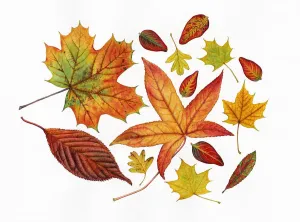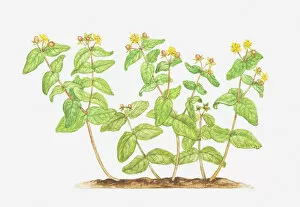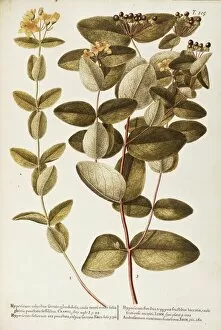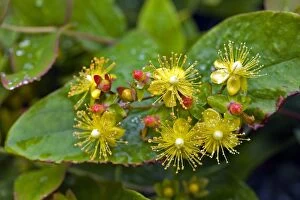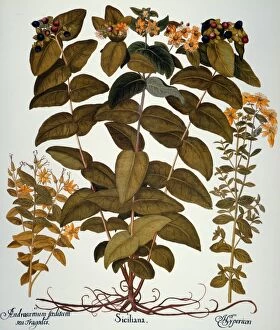Hypericum Androsaemum Collection
"Hypericum androsaemum
All Professionally Made to Order for Quick Shipping
"Hypericum androsaemum: A Victorian Botanical Illustration of a Stunning Shrub" This captivating botanical illustration from 1863 showcases the beauty of Hypericum androsaemum, commonly known as Tutsan. The intricate details of this shrub's flower and foliage are brought to life in this watercolor masterpiece. With its persistent leaves, Tutsan adds an enchanting touch to flower beds and rocky gardens. Spontaneously growing in Italy, it brings a natural charm to any landscape. Its autumn leaves, including Sweet gum (Liquidambar styraciflua), create a vibrant tapestry of colors during the fall season. Tutsan belongs to the Hypericaceae family and is part of a larger genus called Hypericum. This herbaceous perennial plant has pale St. John's-wort (Hypericum montanum) as its close relative. Together, they contribute to the diversity of flora with their unique characteristics. Intriguingly named "stinking tutsan, " another species within the same genus is depicted alongside our star plant in an engraving from Basilius Besler's Florilegium dating back to 1613. This historical artwork highlights not only Tutsan but also wild Saint-John's-wort. The delicate flowers and fruit captured in various illustrations showcase the allure of Tutsan berries that add visual interest throughout its growth cycle. These features make it a fascinating subject for botany enthusiasts who appreciate both scientific accuracy and artistic expression. Whether admired for its aesthetic appeal or studied for botanical research purposes, Hypericum androsaemum continues to captivate us with its timeless beauty across centuries – truly deserving recognition as one nature's remarkable creations.

